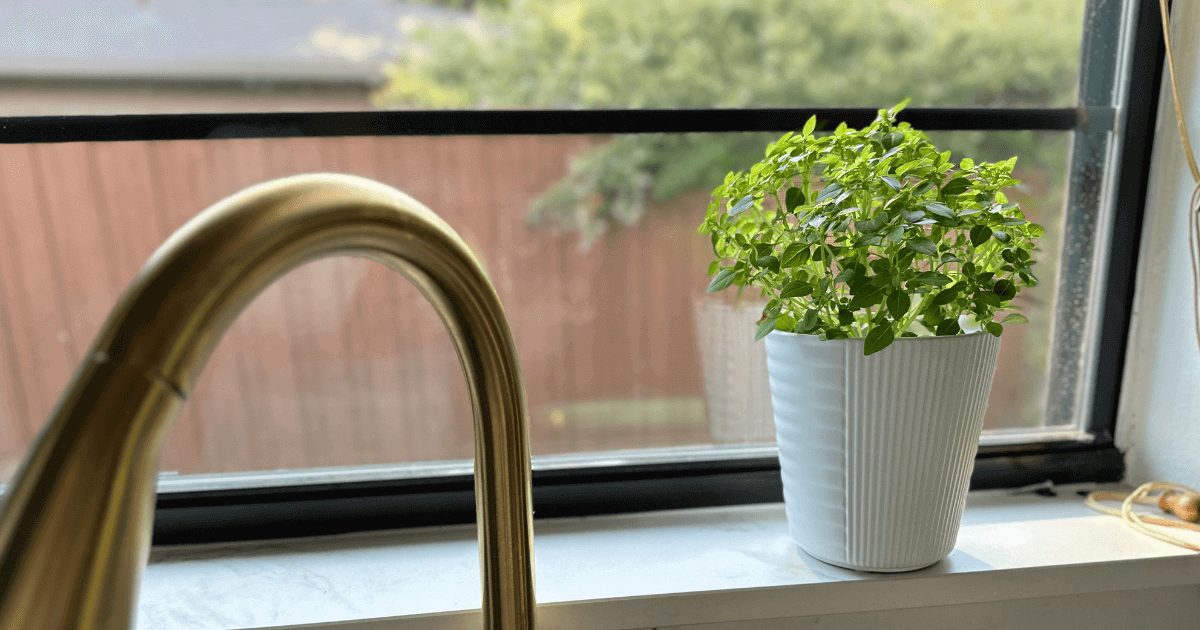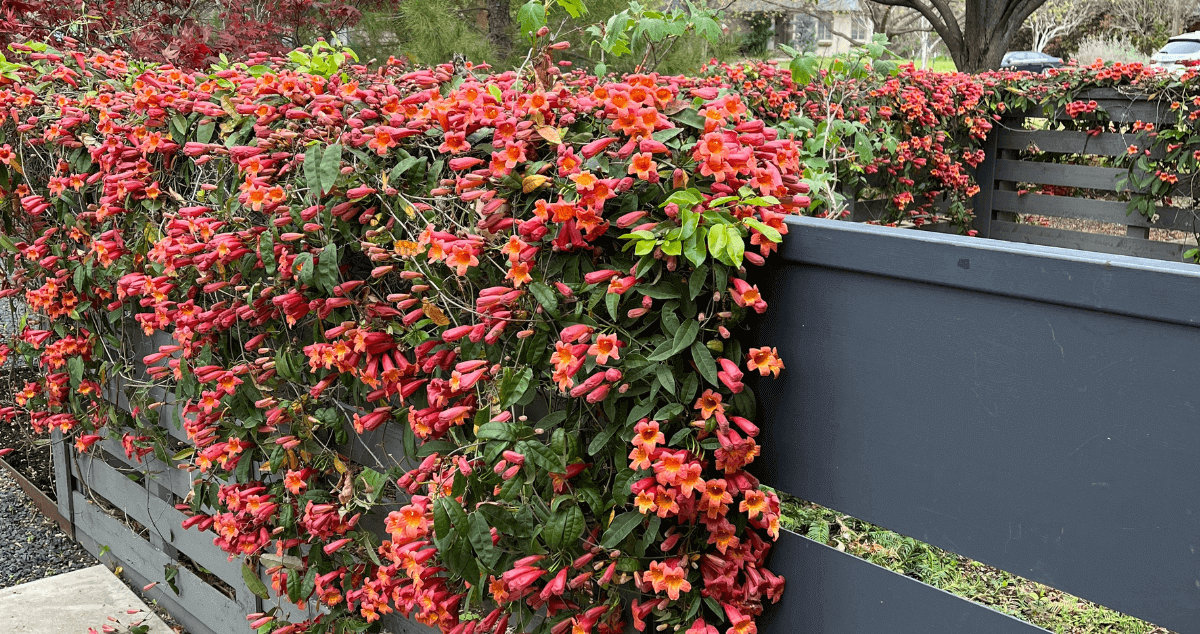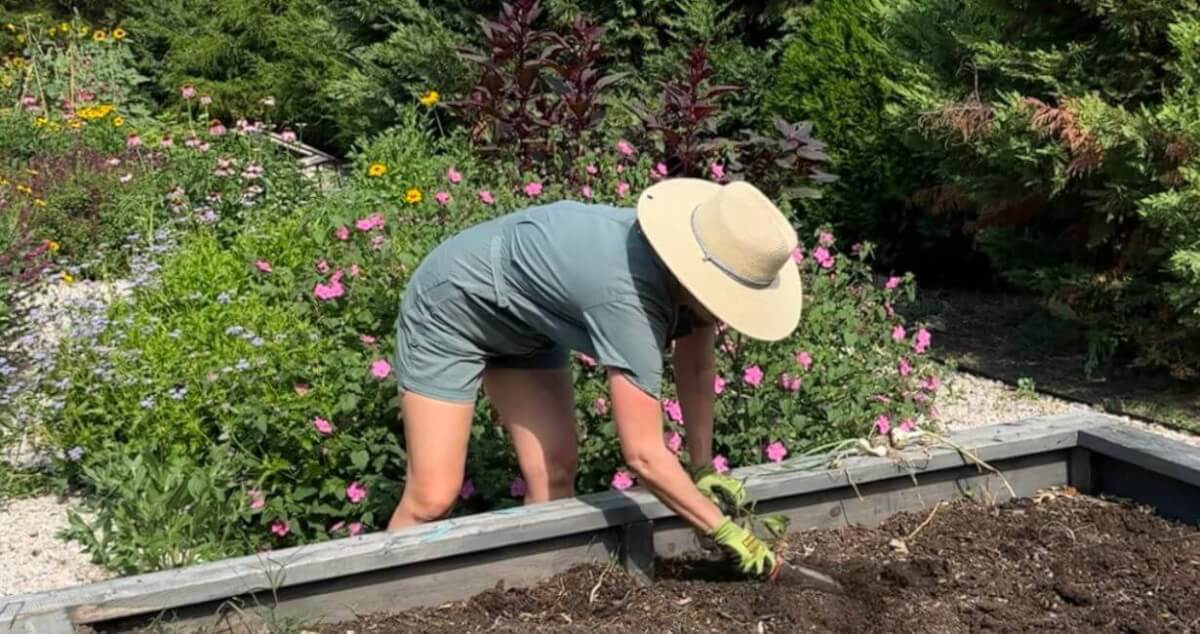
Disclosure: Some of the links below are affiliate links. If you click through and make a purchase, we receive a small commission. This allows us to continue to deliver valuable, free content to North Texas gardeners. Thank you for your support!
Believe me. I’ve made or seen every gardening mistake imaginable. But mistakes in gardening aren’t necessarily a bad thing. I always say: if you’re not making mistakes in the garden, you’re not doing it right. Mistakes are how we learn, improve, and do better next time.
Here are the top ten North Texas gardening mistakes that I see most often and how you can avoid them.
Mistake #1: Planting too late.
In northern climates, the main growing season is from June until mid-September. But here in North Texas we have TWO growing seasons: the early season from March to June and the late or fall season from September until frost.
One of the biggest mistakes North Texas gardeners make is missing the early season window and planting things too late.
Most summer vegetables and perennials should be in the ground no later than mid-April. This gives plants enough time to establish deep root systems and
Some vegetables need to be planted even sooner. Onions should be planted here in late January, and tomato transplants have the best chance at a large fruit production if planted in early March.
If you struggle to get things planted at the right time, we have you covered. Make sure you are subscribed to our newsletter for weekly garden reminders, and check out our month-by-month North Texas garden calendar.
Mistake #2: Not putting down mulch.
Leaving garden soil exposed is by far the number one mistake I see from North Texas gardeners. Mulch is the least-expensive insurance plan for your garden.
Mulching is important because it:
- Keeps soil cool.
- Prevents soil-borne disease.
- Conserves moisture.
- Provides organic matter for the soil.
- Prevents weeds.
There are many options for mulch at garden centers, but the mulch that I use personally and recommend to my clients is hardwood mulch. I occasionally use straw when available, but straw tends to contain a lot of
Apply a fresh layer of mulch in the spring and again in the fall. Weeds grow here year-round.
Mistake #3: Watering at the wrong time of day.
Watering at the wrong time of day can spell disaster for a garden, especially in North Texas.
The most common
- Water droplets left on plant leaves or grass overnight can lead to disease.
- It’s too little, too late. Waiting until evening to water plants leaves them stressed throughout the day. Stressed plants attract pests.
The best time of day to water in North Texas is early morning when temperatures are cool and plants are rested.
If you have sprinklers, set them to run between 5 am and 7 am in the morning.
Mistake #4: Putting plants in the wrong location.
Before establishing a garden it is important to get to know the sunlight patterns in your yard. What areas get sun early in the day? Are there areas that rarely get more than a few hours of sun? Do certain areas get baked by late afternoon sun?
Putting plants in the wrong location is one of the top reasons why plants fail to thrive. Here are the best things to plant in various light conditions:
Full sun areas: At least 6-8 hours of continuous sun
– Perennials like coneflower, salvia, lantana, black-eyed susan, phlox, and ornamental grasses.
– Vegetables and fruit trees.
– Turf grasses like Bermuda, St. Augustine, Buffalo grass, and Zoysia
Early Morning Sun/Afternoon Shade
This is an ideal condition for most plants because it protects them during our intense summer heat. It is especially good for flowering plants that are less tolerant to heat such as:
– Hydrangeas, azaleas, gardenias, dahlias
– Container-grown vegetables, annuals, and perennials
– Turfgrasses: St. Augustine, Zoysia,
Full-shade
Shade gardening is becoming more popular in North Texas. Popular shade-lovers include:
– Japanese maples, Japanese Aralea, Fargugium (Leopard Plant), Ferns, and Ivy
– Oxalis, Lenten Rose, and Astilbe
– Groundcovers: Asian Jasmine, Monkey Grass, Liriope
Late-Afternoon Sun
If you have a gardening area that only receives late afternoon sun, plant drought-tolerant heat lovers like:
– Agave, yucca, cactus, slipper plant
– Vitex, Desert Willow
– Lantana, Rock Rose
Mistake #5: Planting one of everything.
Want to know the #1 secret to a yard and garden that looks professionally landscaped? Plant more of less. Yep, the most beautiful landscapes in the world take advantage of one critical tenet of design: planting in mass. This is especially important for perennials, shrubs, and ornamental grasses.
Many new gardeners make the mistake of planting one of everything. The result? A disorganized, cluttered, lackluster landscape. Instead of buying 8 different perennials, buy multiple plants of fewer varieties. Instantly your landscape will look more calm, composed, and lush.
Here is an example:
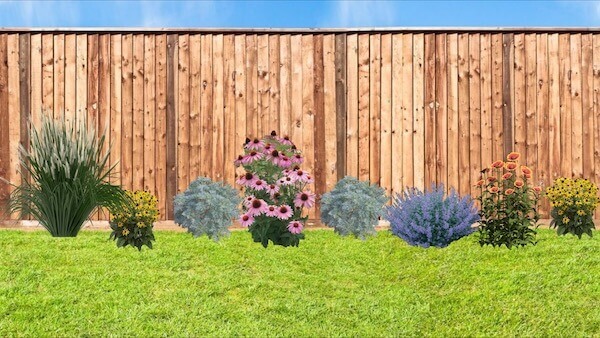
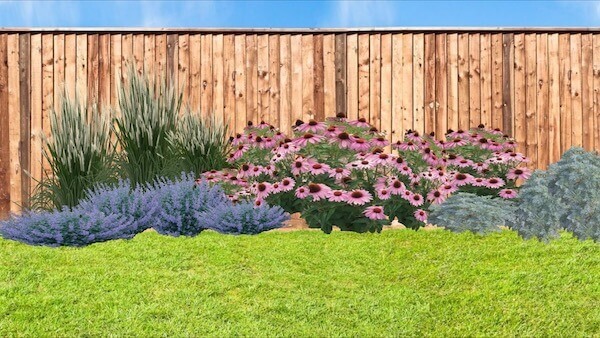
The first landscape uses six different kinds of perennials. The second landscape uses just four: fountain grass, nepeta (cat mint), coneflower, and artemesia.
Does you current landscape look like the “before” picture? Don’t worry. It’s a quick and easy fix. Simply divide your perennials in the fall or spring to make two new plants.
Mistake #6: Thinking weeds will disappear on their own.
With leadership roles in a number of community gardens over the years, I’ve watched countless new gardeners come and go.
I’ll never forget Stanley, a young man in his early 20s. He eagerly signed up for a plot in early March, and for three weeks straight he worked his heart out tilling, planting and
What Stanley didn’t realize is that gardening is not something that you do once. Gardening is something that you do little by little, every single day.
Weeding is one of these little by little tasks. It is not Instagrammable. It is not fun. But if you mulch your gardens well and do a little weeding each week, your garden will reward you.
Mistake #7: Not keeping records.
Keeping planting records might seem “extra”. Like maybe something only a professional should do. But keeping planting records is important for gardeners of all levels and interests.
Record-keeping helps you to:
- Learn how late in the season you can plant things.
Sunflowers can be planted from spring through frost in North Texas, but thanks to my detailed planting records I learned that August 15th is the cut off date. Sunflower seeds that I planted past August 15th never made it to maturity. - Calculate the actual days to maturity.
Thanks to careful records I know that I can grow an Orange Hat tomato from seed to fruit in 49 days. Days to maturity is also helpful when planning fall plantings of summer crops. - Keep track of varieties.
No matter how careful you are, plant labels frequently get lost. Records serve as a reminder of what you planted. - Track germination rates.
My records include a field to record germinate rate. If a particular seed company is showing consistently poor germinate rates, I know not to order from them in the future. - See trends in your garden.
This year I added a field for amendments so that I could track fertility levels of my gardens.
Mistake #8: Not fertilizing
The best fertility program for plants is building healthy soil. But even plants in the healthiest of soils can benefit from applications of
There are three important times to fertilize:
- During seedling growth (if starting plants from seed)
- At planting time
- Every 2-3 weeks throughout the growing season
How to fertilize:
- Select a balanced liquid or granular
fertilizer , and apply to plants according to the directions on thelabel . For my houseplants and patio container plants, I like to apply liquidfertilizer at 50% strength on a weekly basis to maintain consistent fertility. - The kind of
fertilizer that you use is less important than using it consistently, but my favorite fertilizers are FoxFarm Grow Big for seedlings and young plants, Texas Tomato Food for vegetables when they start fruiting (it contains calcium), Ammonium Sulfate for onions and garlic, and Bio Blast for houseplants and containers.
Mistake #9: Not composting grass clippings
It kills me when I see trash bags full of grass on the curb on bulk trash pick-up week. That is solid green gold!
Grass clippings are one of the best materials for composting, and the biggest mistake made by gardeners with lawns is throwing them away.
Homemade compost is ten times better than any compost that you can buy commercially. It’s chock full of beneficial microorganisms. Plus, composting at home is as easy as making a pile in the corner of your yard.
Composting is simple:
- Pile up leaves, grass clippings, garden waste, and kitchen waste like vegetables and eggshells (no proteins, fats, or dairy products) in the corner of your yard.
- Water pile during long stretches without rain, but avoid keeping the pile soggy.
- Turn pile every 3-4 weeks to speed up decomposition, but compost will form even if you don’t turn the pile.
- Compost will accumulate at the bottom of the pile. Harvest as soon as the compost reaches an amount that is usable.
Mistake #10: Building raised beds too high
Unless garden beds need to be high for gardeners with mobility issues, a raised bed should be no more than 12 inches high, especially in North Texas.
Raised garden beds improve drainage and allow the addition of high quality soil mixes. But beds that are too high leave the soil inside dangerously exposed to high ambient temperatures. Plus, the moisture in the soil is quickly drawn out through the wooden structure. These high raised beds suffer from heat and drought stress.
Keeping beds close to the ground takes advantage of the ground soil’s cooler temperatures, moisture, and fertility.
Here is an example from a school garden:
Both beds were planted at the same time with the same plants. You can clearly see the difference in plant health.
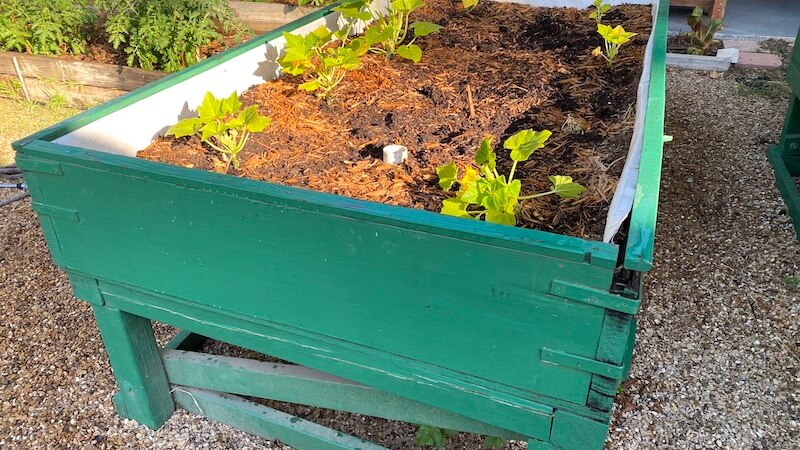
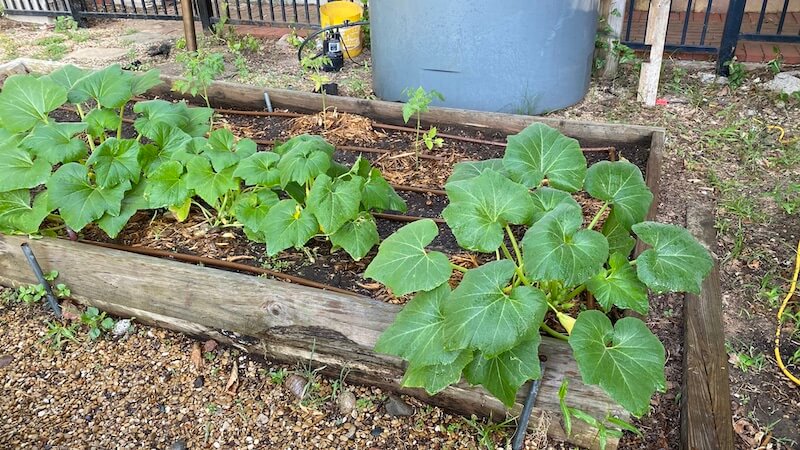
Unless there is a physical need for tall beds, keep raised beds no higher than 12 inches.

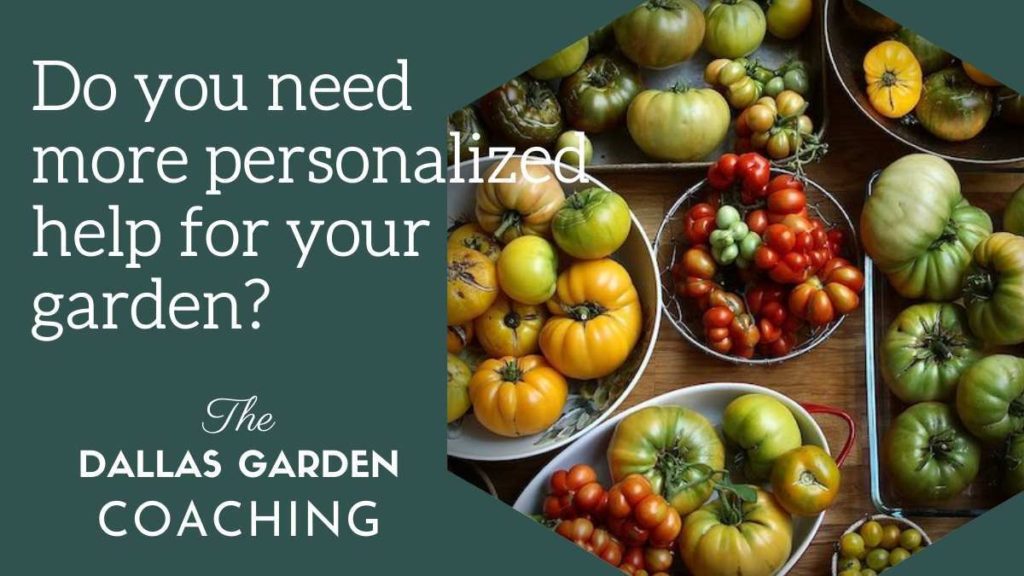
- New Plant I’m Testing: Kitchen Minis™ Bonsai Basil - April 24, 2024
- Resilient Perennials I’m Adding to My New Landscape - February 28, 2024
- 5 Ways to Enjoy Beautiful Fall Weather in DFW - October 18, 2023



